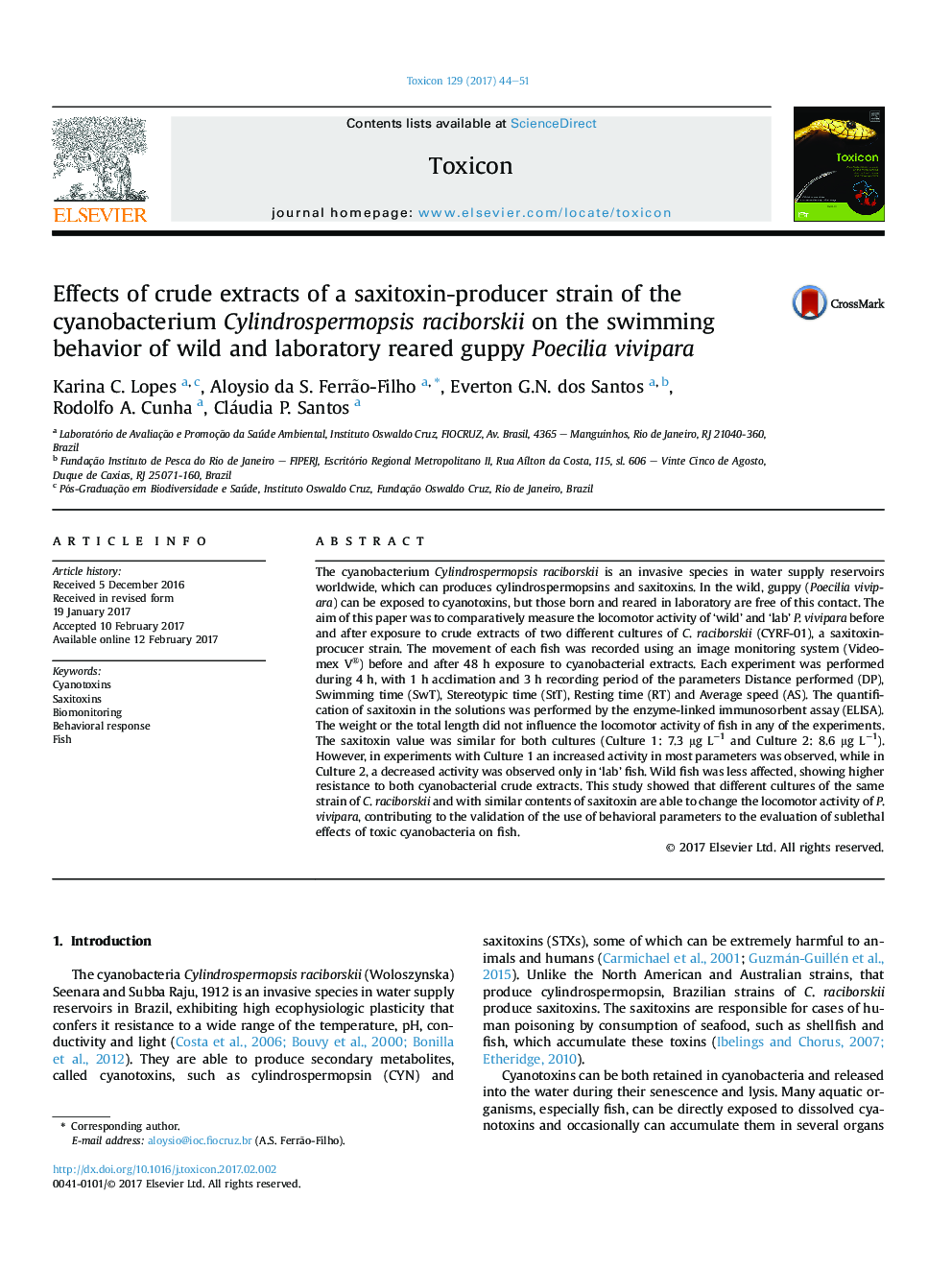| Article ID | Journal | Published Year | Pages | File Type |
|---|---|---|---|---|
| 5519398 | Toxicon | 2017 | 8 Pages |
â¢Cyanobacteria can produce an array of secondary metabolites exerting effects on fish.â¢Cylindrospermopsis raciborskii can produce saxitoxins and cyllindrospermopsins.â¢Poecilia vivipara (wild and lab) were exposed to crude extracts of C. raciborskii for 48 h.â¢Fish was monitored for swimming activity parameters before and after exposure.â¢Toxic extracts had greater effects on the locomotor activity in lab than wild fish.
The cyanobacterium Cylindrospermopsis raciborskii is an invasive species in water supply reservoirs worldwide, which can produces cylindrospermopsins and saxitoxins. In the wild, guppy (Poecilia vivipara) can be exposed to cyanotoxins, but those born and reared in laboratory are free of this contact. The aim of this paper was to comparatively measure the locomotor activity of 'wild' and 'lab' P. vivipara before and after exposure to crude extracts of two different cultures of C. raciborskii (CYRF-01), a saxitoxin-procucer strain. The movement of each fish was recorded using an image monitoring system (Videomex V®) before and after 48 h exposure to cyanobacterial extracts. Each experiment was performed during 4 h, with 1 h acclimation and 3 h recording period of the parameters Distance performed (DP), Swimming time (SwT), Stereotypic time (StT), Resting time (RT) and Average speed (AS). The quantification of saxitoxin in the solutions was performed by the enzyme-linked immunosorbent assay (ELISA). The weight or the total length did not influence the locomotor activity of fish in any of the experiments. The saxitoxin value was similar for both cultures (Culture 1: 7.3 μg Lâ1 and Culture 2: 8.6 μg Lâ1). However, in experiments with Culture 1 an increased activity in most parameters was observed, while in Culture 2, a decreased activity was observed only in 'lab' fish. Wild fish was less affected, showing higher resistance to both cyanobacterial crude extracts. This study showed that different cultures of the same strain of C. raciborskii and with similar contents of saxitoxin are able to change the locomotor activity of P. vivipara, contributing to the validation of the use of behavioral parameters to the evaluation of sublethal effects of toxic cyanobacteria on fish.
